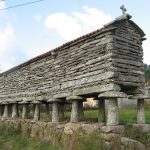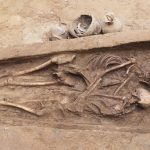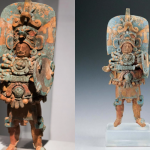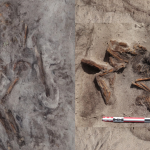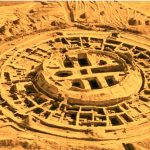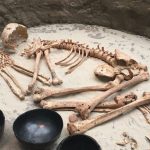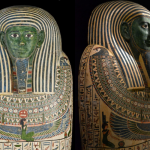Statue of Metri as a Scribe
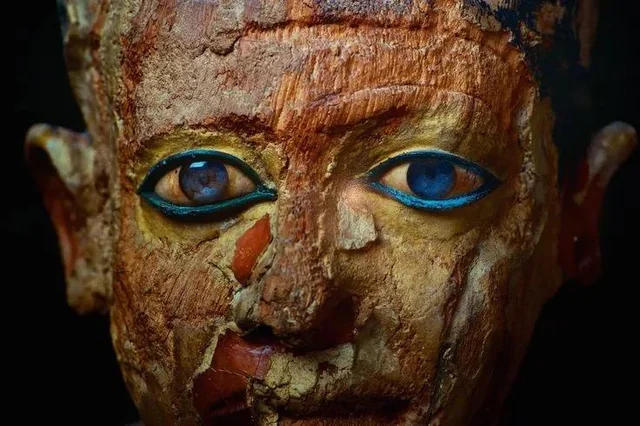
The statue represents Metri, an overseer of the scribes during Egypt’s 6th Dynasty, depicted in the traditional scribe’s pose with legs crossed. A papyrus scroll rests on his lap, held in his left hand, while his right hand grasps a pen.
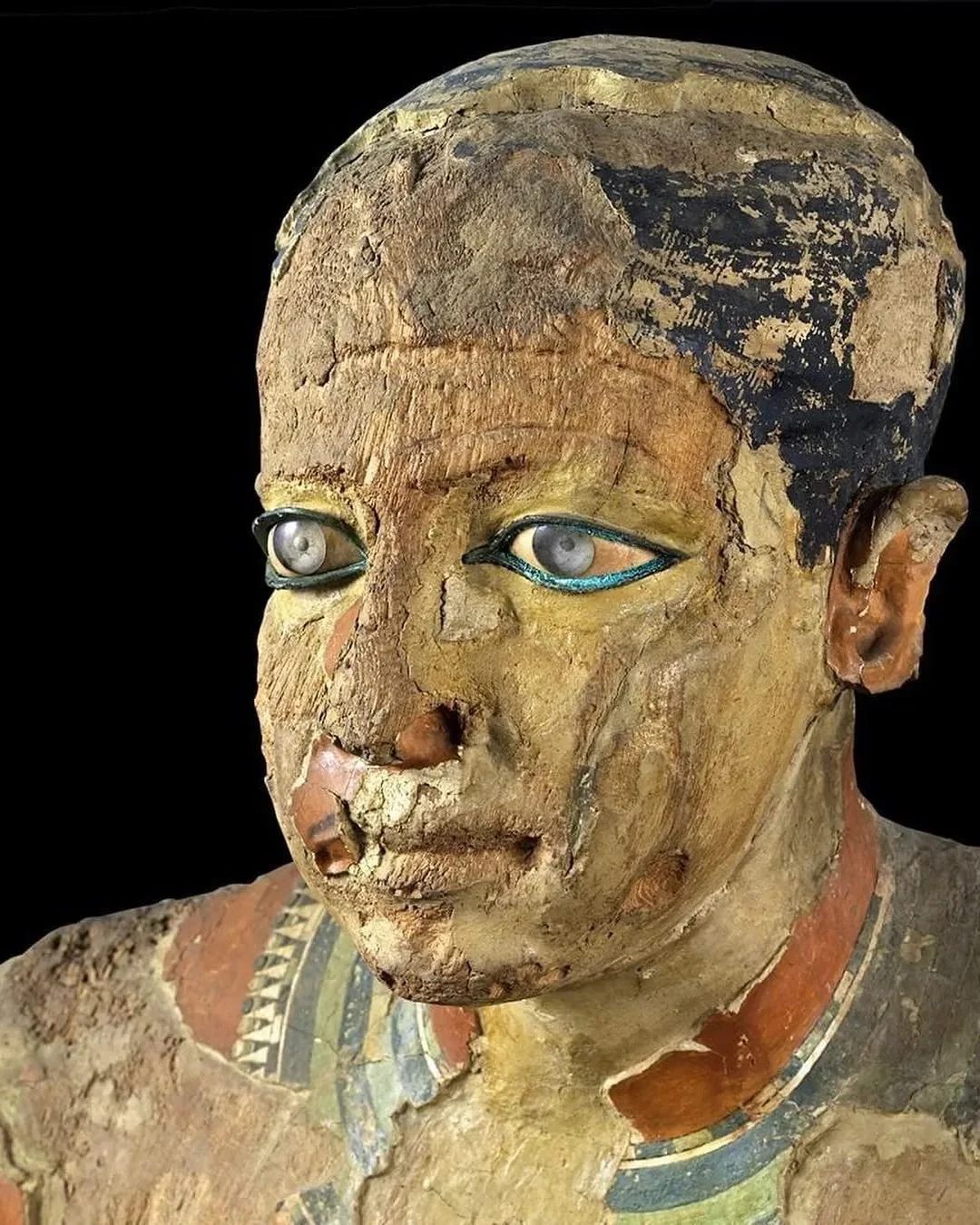
The figure’s body is painted in a reddish-brown hue, and Metri is shown with short, natural hair. Around his neck hangs a broad, multi-strand necklace, with traces of its original colors—light blue, green, and white—still visible. His eyes are inlaid with opaque quartz for the whites and rock crystal for the pupils, giving them a lifelike appearance. His name and titles are inscribed on the wooden pedestal supporting the statue.
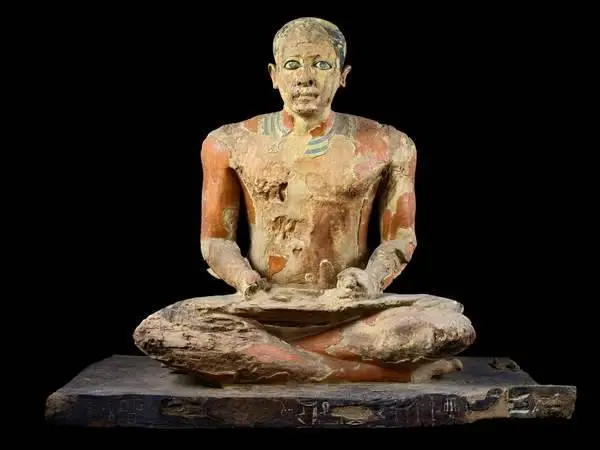
Seated statues with crossed legs were a common type reserved for private individuals, appearing in a variety of contexts such as divine and funerary temples, sanctuaries, and necropolises, and were accessible to people of different social ranks.

Metri held numerous titles, including Nome Administrator, Priest of the Goddess Maat, Greatest of the Tens of Upper Egypt, and Close Counselor. A smaller standing figure once accompanied the statue but has since been almost entirely destroyed.
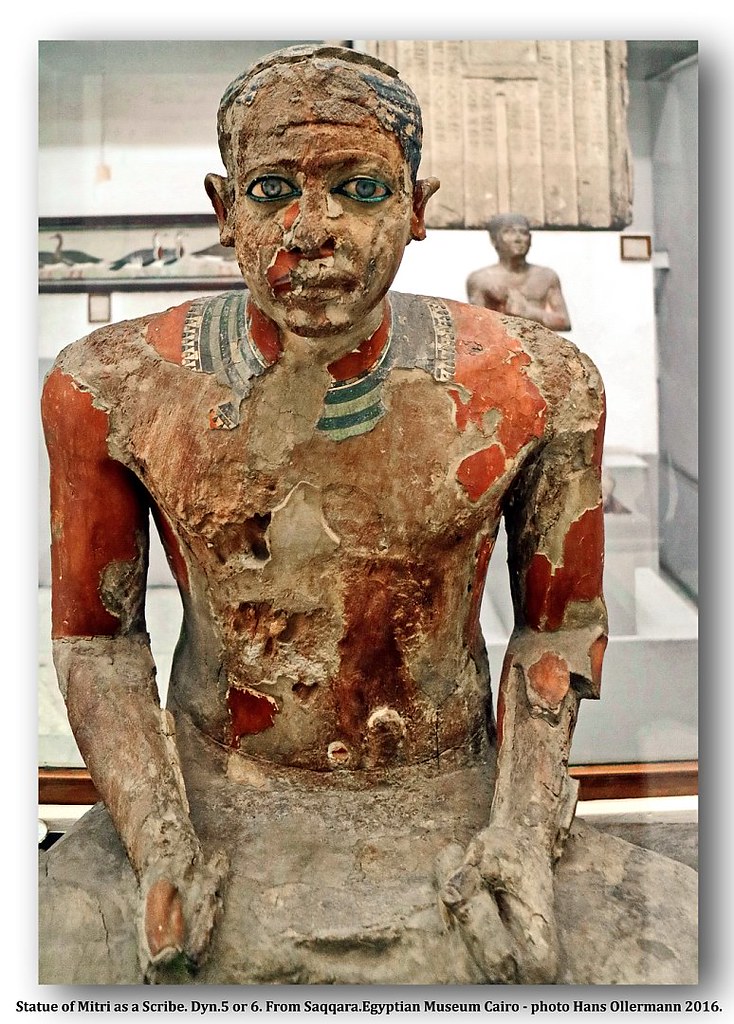
This work, dating to the Old Kingdom’s 5th Dynasty (c. 2498–2345 BCE), was discovered in the Saqqara necropolis and is now housed in the Grand Egyptian Museum (JE 93165).



